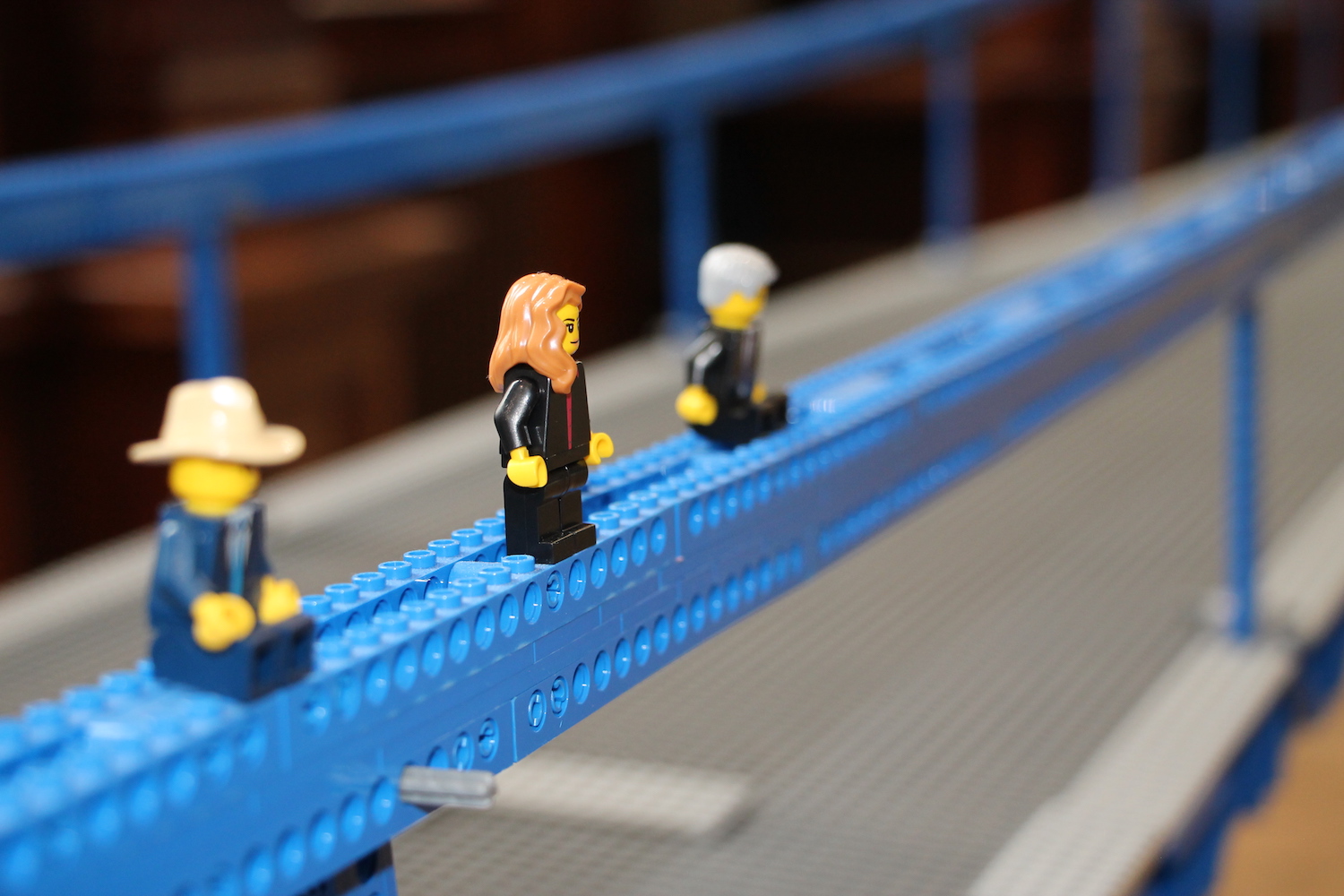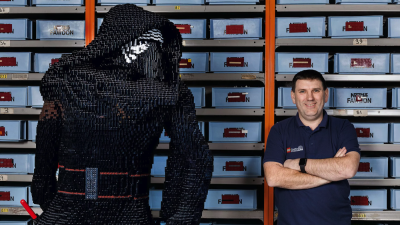Last year, Bright Bricks and the Institute of Civil Engineers (ICE) broke the world record for the longest single bridge span created out of LEGO bricks, unaided by glue or structural supports. We achieved the record with a span of 16.46 metres across central part of the bridge, with the two connected sides at either end giving the bridge a total span of 31 metres.
In April 2017, the time had come for the bridge to come down. ICE had an idea…
By the time we got to ICE’s headquarters, picturesquely situated opposite Parliament, the space around the LEGO bridge had been lined with barriers. It had sat in the grand library there for the last six months, since we had installed it and carefully backed away. It had fallen on the second day of the installation, such was the precarious nature of the build.
Maybe the library was the ideal setting; nobody would rush past or accidentally collide with the model. Maybe that was the reason it was still standing, much longer than most people had anticipated.
That day though, in April, we were there to take the bridge down, and ICE had a plan to ‘help’ us; to test the strength of the bridge until it collapsed. We packed our brooms.



Being close to it made you realise why the record was so impressive. With the event scheduled a few hours later, nobody wanted to touch it - nobody wanted to be the one who caused it to fall before the big event. But the truth was that no one had a clue how much force the bridge could take. We looked to the civil engineers slowly assembling and their opinions varied just like ours.
One brave soul had attached some minifigs to the bridge over the course of its stay at One Great George Street. ‘Rather them than me’ was the consensus amongst the Bright Bricks staff.



With the challenge set by ICE, our team decided that running a LEGO train over the bridge would be the most fitting test for its strength. We built some carriages capable of carrying steel bolts and attached it to an electric LEGO train.
All we needed now was a track, but some people thought we might not even manage that part without failure. We built about 20 metres of track and Bright Bricks Creative Director, Ed Diment, carefully laid it. Ed had been the key in the design of the build from a LEGO perspective, so he felt like the only man for the job.



A local school joined the spectators and the crowd of 50 eagerly awaited the first test - running just the electric train over the bridge. The weight had little impact and the train swept across at a fairly impressive speed. It was time to start loading some weight into the carriages.
As the train chugged across again, this time with its speed hampered by the weight of the steel bolts, and the effect was obvious. The bridge began to sag under the weight, its deck rippling as the train made its way across, and with the audible creak of 200,000 LEGO bricks being moved for the first time in six months.
Still, the bridge stood strong.


On the fourth run, the bridge deck finally gave way at its most central point, where it had been pulled from both sides for all those months.
You could argue the bridge survived; it was still taking the strain through the long suspension cable, but it was clear that it was a matter of time before giant towers collapsed and our team had to move fast.
One of the long cables and deck below it were the first parts to go - in the ICE video below you’ll see how little it took to send 16 metres of LEGO plummeting to the ground. We rushed to remove the cabling from the towers and the LEGO anchorage, avoiding a huge crash.


Whilst the school children took a closer look at the design of LEGO, the Bright Bricks team, aided by some of the invaluable ICE staff went about packing the LEGO away.
The towers were able to survive the whole deconstruction, and were packed whole into our lorry. The anchor points needed to be unpacked because of their enormous weight. Where concrete is used in construction, the Bright Bricks team had used LEGO train weights - if you’ve ever held one, you can imagine how heavy a 1m cube would be.
As for the deck; well we’ll have to start that bit again.
It was a unique experience for us, and we throughly enjoyed our first experience of a ‘failure test’.
I guess you could say we ‘broke’ the world record twice.
Keep an eye on our social channels to discover the bridge’s next home. Catch up on the construction of the world record bridge on ICE’s YouTube channel.
Words and photos by Tom Chant. Video by Institute of Civil Engineers. Thanks to Institute of Civil Engineers, Flint & Neill (a COWI company), CEMAR and Tony Gee and Partners LLP.







Comments